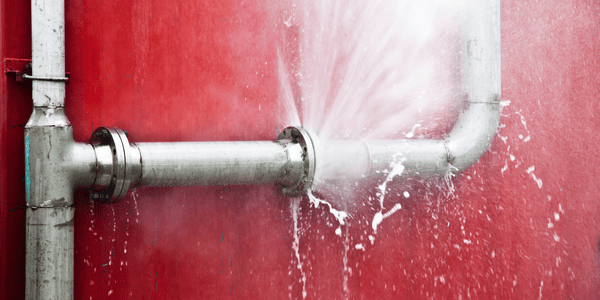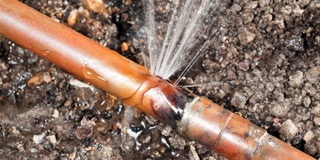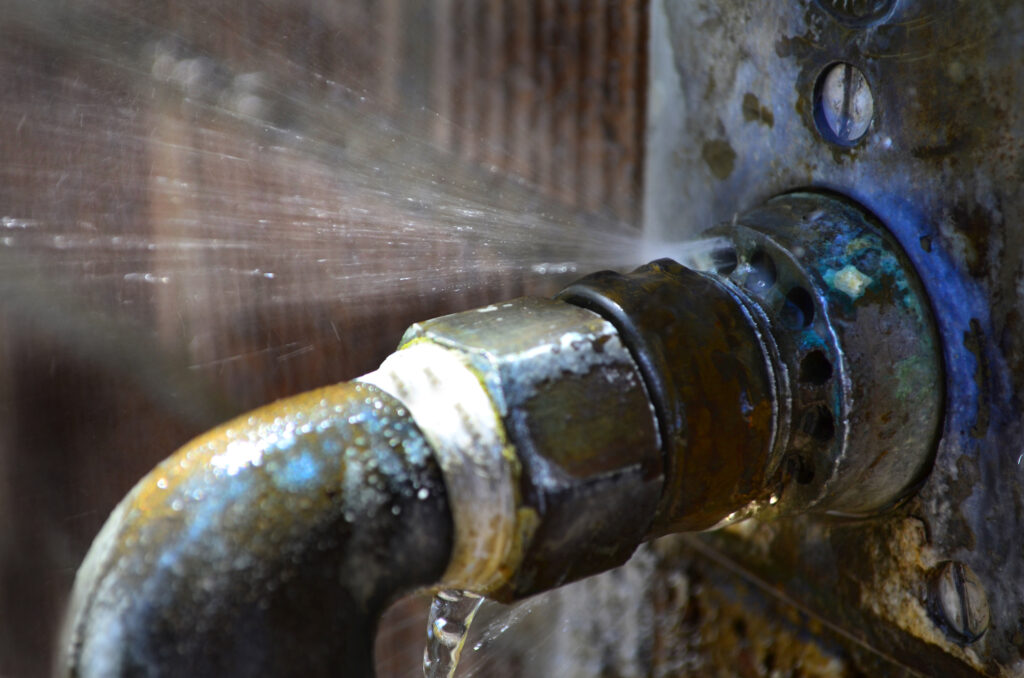
Is your home prepared for a burst pipe disaster? Burst pipes can turn your cozy haven into a soggy disaster zone, causing extensive damage to your property and plenty of stress. From ruined floors and walls to skyrocketing repair bills, the consequences of a burst pipe can be overwhelming.
But here’s the good news: with a little effort and the right know-how, you can prevent burst pipes before they start. In this guide, we’ll explore what causes pipes to burst, how to recognize warning signs, and the practical steps you can take to protect your home. Let’s keep your pipes intact and your home dry!
The Silent Threat: What Causes Burst Pipes?

When Pressure Strikes: How Frozen Water Becomes Your Worst Enemy
When temperatures plummet, the water inside your pipes can freeze and expand, creating immense pressure. Eventually, this pressure becomes too much for the pipe walls to handle, leading to a rupture.
Frozen pipes are one of the most common culprits behind burst pipes, especially during winter months. Homes in colder climates or those with exposed pipes in unheated areas like attics, basements, and garages are particularly vulnerable. Insulating your pipes and taking proactive cold-weather precautions can significantly reduce this risk.
Rust and Wear: How Aging Pipes Put Your Home at Risk
Pipes don’t last forever. Over time, older pipes can rust, corrode, and weaken, making them more prone to bursting. Materials like galvanized steel, which were commonly used in older homes, are especially susceptible to deterioration.
If your home’s plumbing system hasn’t been upgraded in decades, it might be time for an inspection. Proactively replacing aging pipes with modern materials like PEX or copper can save you from costly water damage down the line.
Know Your Weak Spots: Assessing Your Home’s Plumbing System
Every plumbing system has its vulnerable spots. Exposed pipes in unheated areas, poorly installed joints, and older pipe connectors are just a few examples of weak points that could lead to a burst. Identifying and addressing these risks can save you from thousands of dollars in water damage repairs.
Conducting a thorough inspection—or hiring a professional to do so—can help you identify areas of concern before they become emergencies.
Prevent Burst Pipes: How to Spot the Danger Before It’s Too Late
Listen Closely: The Warning Sounds That Mean Trouble
Sometimes your plumbing warns you of trouble ahead. If you hear strange noises like banging, clanking, or gurgling in your pipes, it could indicate increased pressure or loose pipe connections. Ignoring these sounds might lead to a burst pipe when you least expect it.
Pay close attention to these warning signs, especially during winter or when your plumbing system is under heavy use.
Spots, Smells, and Stains: Subtle Clues of a Bursting Pipe
Discolored walls, damp patches, or musty odors are telltale signs of a hidden leak. These seemingly minor issues often indicate that a pipe is already compromised and on the verge of bursting.
Water stains on ceilings or walls, as well as mold or mildew growth, are major red flags. If you notice these symptoms, take immediate action to investigate and address the problem.
Why Low Water Pressure Could Mean Big Trouble
Weak water flow from your faucets or showerheads might seem like a minor inconvenience, but it could indicate a serious problem. Low water pressure is often caused by a leak or blockage in your plumbing system, both of which increase the risk of a burst pipe.
If you experience a sudden drop in water pressure, don’t ignore it. Investigate the cause or call a professional plumber to diagnose the issue before it worsens.
Prevention 101: How to Protect Your Pipes from Bursting

Winter Warriors: Shield Your Pipes from Freezing Temps
Winter is one of the most challenging seasons for your plumbing system. Protect your pipes by:
- Keeping your thermostat set to a consistent temperature, even when you’re away.
- Opening cabinet doors under sinks to allow warm air to circulate around the pipes.
- Draining outdoor faucets and garden hoses to prevent freezing.
- Using pipe insulation or heat tape to protect exposed pipes.
These simple steps can save you from the costly repairs and stress of dealing with burst pipes.
Read more from the American Red Cross- Preventing & Thawing Frozen Pipes
Insulation Nation: The Homeowner’s Secret Weapon
Pipe insulation is one of the most effective ways to prevent frozen and burst pipes. Affordable and easy to install, insulation sleeves act as a protective barrier, keeping pipes warm even in freezing conditions.
If you live in an area prone to cold snaps, insulating your pipes is a no-brainer. Don’t wait for temperatures to drop—prepare your plumbing system today!
Drip, Drip, Hooray: Why Letting Faucets Run Can Prevent Bursts
During extremely cold weather, allowing your faucets to drip can prevent pressure buildup inside your pipes. This simple trick reduces the risk of freezing water and burst pipes, especially in areas with severe winters.
DIY Maintenance: Keep Your Plumbing in Tip-Top Shape
Flush It Out: Regular Pipe Cleaning Is Crucial
Over time, sediment and debris can accumulate in your pipes, leading to blockages and increased pressure. Regularly flushing your plumbing system with hot water or a safe pipe-cleaning product can keep things flowing smoothly.
Check Those Joints: Tight Seals Make Strong Pipes
Your plumbing system is only as strong as its weakest link. Inspect pipe joints, connectors, and rubber seals regularly for signs of wear or damage. Tightening loose connections or replacing worn parts can prevent small issues from turning into major disasters.
Upgrade Alert: Replace Old Pipes Before Disaster Strikes
If your pipes are nearing the end of their lifespan, consider upgrading to modern materials like PEX or copper. These materials are more durable and less prone to bursting than older options like galvanized steel.
What to Do If a Pipe Bursts
First Things First: Shut Off the Water
When a pipe bursts, the first step is to shut off your home’s main water supply. Knowing the location of your shut-off valve can make all the difference in minimizing water damage.
Damage Control: Quick Fixes While You Wait for Help
While waiting for professional assistance, use clamps, rubber sheets, or duct tape to temporarily patch the burst pipe. These stopgap measures won’t solve the problem but can reduce water loss and buy you time.
Call in the Experts: Professional Help for Burst Pipes
Handling a burst pipe can quickly become overwhelming. That’s why calling in professionals like Complete Flood Restoration is essential. With IICRC-certified technicians and a rapid response team, they’re ready to restore your home and your peace of mind.
Stay Proactive: Long-Term Protection from Burst Pipes
Schedule Regular Plumbing Inspections
Prevention is the best cure. Regular plumbing inspections can help catch small problems before they turn into costly emergencies. A professional plumber can assess your system’s condition and recommend necessary upgrades or repairs.
Invest in Burst-Resistant Pipes
Modern plumbing materials, like burst-resistant PEX pipes, are designed to withstand high pressure and temperature extremes. Upgrading your plumbing system can provide peace of mind and long-term savings.
Install Leak Detection Devices
Smart leak detection devices monitor your plumbing system 24/7 and alert you to potential issues in real-time. These devices can save you from surprise water damage and make a valuable addition to any home.
Call Complete Flood Restoration for Pipe Burst Cleanup
Preventing burst pipes doesn’t have to be complicated. With a little preparation, regular maintenance, and proactive upgrades, you can protect your home from water damage and avoid the stress of costly repairs. From insulating your pipes to scheduling inspections and investing in modern plumbing, the steps you take today can save you a fortune tomorrow.
Need help with water damage restoration in San Antonio? Call Complete Flood Restoration today for fast, reliable service!
